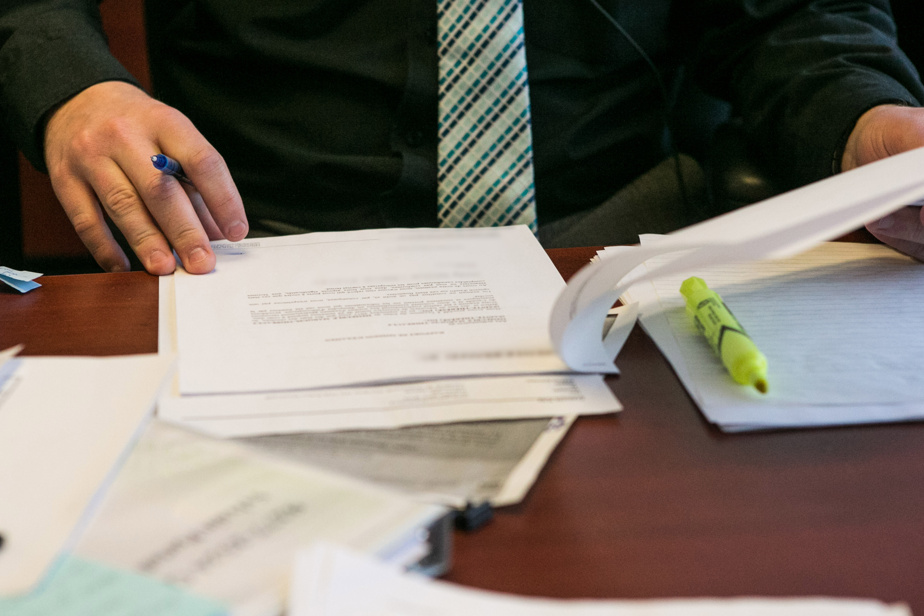Paul*, 50, is a technology consulting entrepreneur whose personal income and that of his wife support a comfortable lifestyle with their three children in high school and university. But, about ten years before his retirement project, and the possibility of selling his block of shares in the SME he manages with his associates, Paul is concerned about the absence of financial assets other than these shares in his contribution to the family patrimony.
Posted at 6:00 a.m.
The situation
This equity holding is valued at approximately $3 million. But this is a summary assessment whose real value will only be redeemable for sale on the resale of its block of shares.
Paul’s personal Registered Retirement Savings Plan (RRSP) and Tax-Free Savings Account (TFSA) accounts have barely $1,600 in assets. Paul has $240,000 worth of unused contribution room!

PHOTO HUGO-SÉBASTIEN AUBERT, LA PRESSE ARCHIVES
An entrepreneur prepares for his retirement, which he wants to be comfortable for himself and his loved ones.
Numbers
Financial assets :
- in a registered retirement savings plan (RRSP): $1,500 (accumulated amount of unused contributions: $166,000)
- in a tax-free savings account (TFSA): 0 (full amount of $81,500 in unused contribution room)
- in Registered Education Savings Plans (RESP): $23,500 (2 children aged 12 and 16)
- in advisory services SME shares: approximately 3 million (estimated value based on its recent results and comparable SME share transactions)
Non-financial assets:
- principal residence: approximately $670,000 (50% co-ownership with his wife)
Passive :
- residential mortgage balance: $272,000 (50% owned with his wife)
- personal credit card balance: approximately $3,000
Personal income:
- jobs and contracts: $135,000 (gross)
Main personal disbursements:
- related to the family residence: $36,000
- related to family lifestyle: $46,000
- related to personal taxation: $43,000
To remedy this situation, Paul plans to take advantage of a home equity line of credit on the family home, provided for up to $250,000 in funds accessible at a rate of approximately 4.5%.
By doing so, Paul thinks he can optimize his tax advantages related to RRSP “catch-up” contributions during his years of highest taxable income.
“Is this a good way to quickly replenish my RRSP in order to benefit from maximum “tax returns” during the few years of work before my retirement? And this, despite the higher interest costs than before on a home equity line of credit? asks Paul.
Paul’s situation was submitted for analysis and advice to Daniel Lanteigne, financial planner and senior partner at the consulting firm Reverber Financial Strategies, established in Quebec.
Mr. Lanteigne is also outgoing Chairman of the Board of Directors of the Institut québécois de planification financière (IQPF).

PHOTO HUGO-SÉBASTIEN AUBERT, LA PRESSE ARCHIVES
An entrepreneur prepares for his retirement, which he wants to be comfortable for himself and his loved ones.
Advice
“Paul’s situation is similar to that of many entrepreneurs. His financial independence for retirement will materialize with the sale of his shares in the company,” notes Daniel Lanteigne from the outset.
In this context, he considers as “very relevant” Paul’s question about the possibility of borrowing from a home equity line of credit to replenish his still very thin RRSP, while optimizing the tax refunds of his contributions during his older years. high personal tax rate.

PHOTO ERICK LABBÉ, LE SOLEIL ARCHIVES
Daniel Lanteigne, Financial Planner, Financial Security Advisor and Senior Partner at Reverber Financial Strategies (SFL Wealth Management) and former Chairman of the Board of Directors of the Institut québécois de planification financière
“The RRSP is one of the last tax shelters for individuals, and its appeal is undeniable,” recalls Mr. Lanteigne.
“To be profitable, the annual contribution to the RRSP must provide a possibility of tax recovery greater than the income tax that will be due on its withdrawal, once retired. »
In his analysis of Paul’s situation, Daniel Lanteigne estimates that based on his current tax rate, he can expect to recover the equivalent of between 41% and 47% of RRSP contributions from the order. from $20,000 to $40,000 per year.
“At first glance, that would be really great,” admits Mr. Lanteigne.
“But there would be a way for Paul to do even better from a tax point of view if he waited to make his RRSP contributions with the liquidities coming from the eventual resale of his SME shares. »
How to do ?
Daniel Lanteigne reminds that as a shareholder-manager of an SME, Paul will be eligible for the tax exemption on the capital gain for the disposal of SME shares (ECGC, in tax jargon) up to an amount in the order of $913,000, according to the criteria in effect for 2022.
“In the event that Paul sells all of his shares of SME for 3 million dollars during a year when this is his only income, there would result a capital gain of 3 million of which half, that is 1, 5 million, would then be taxable income for Paul, explains Daniel Lanteigne.
“However, he could deduct the equivalent of 50% of the exemption amount of $913,000 relating to the ECGR, or approximately $456,000. This deduction would lower his taxable income to around $1.04 million, and his tax payable to around $525,000, says M Lanteigne.
“Then, if Paul then super-contributed $160,000 to his RRSP, he could recoup about $85,000 in tax relief. In the end, it could reduce the tax payable on the capital gain from the resale of his SME shares by around $440,000. »
As for the relevance of borrowing to replenish an RRSP, Daniel Lanteigne considers that it would be an ill-advised approach for most individuals, both from a financial and tax point of view.
“I don’t recommend borrowing to contribute to an RRSP because it entails costs and financial risks that usually exceed the short-term tax benefits,” sums up Daniel Lanteigne.
On the one hand, he explains, the interest costs on a loan to contribute to a registered savings plan (RRSP, TFSA, RESP) are not eligible for the tax deduction of the cost of borrowing to invest for revenue purposes.
In addition, borrowing to make “catch-up” contributions and investments in savings or investment accounts involves a significant risk of concentrating purchases of financial assets at the wrong time in the markets.
“Because it is very difficult – if not impossible for individuals – to anticipate movements in the financial markets, it is almost always preferable that they stick to periodic purchases by predetermined amounts, indicates Daniel Lanteigne.
“This is what is referred to in financial planning as the “average cost method”, which constitutes a better balanced and less risky investment strategy for an individual. »
* Although the case highlighted in this section is real, the first name used is fictitious.
Are you planning a project that requires a wise use of your money? Do you have financial problems?

